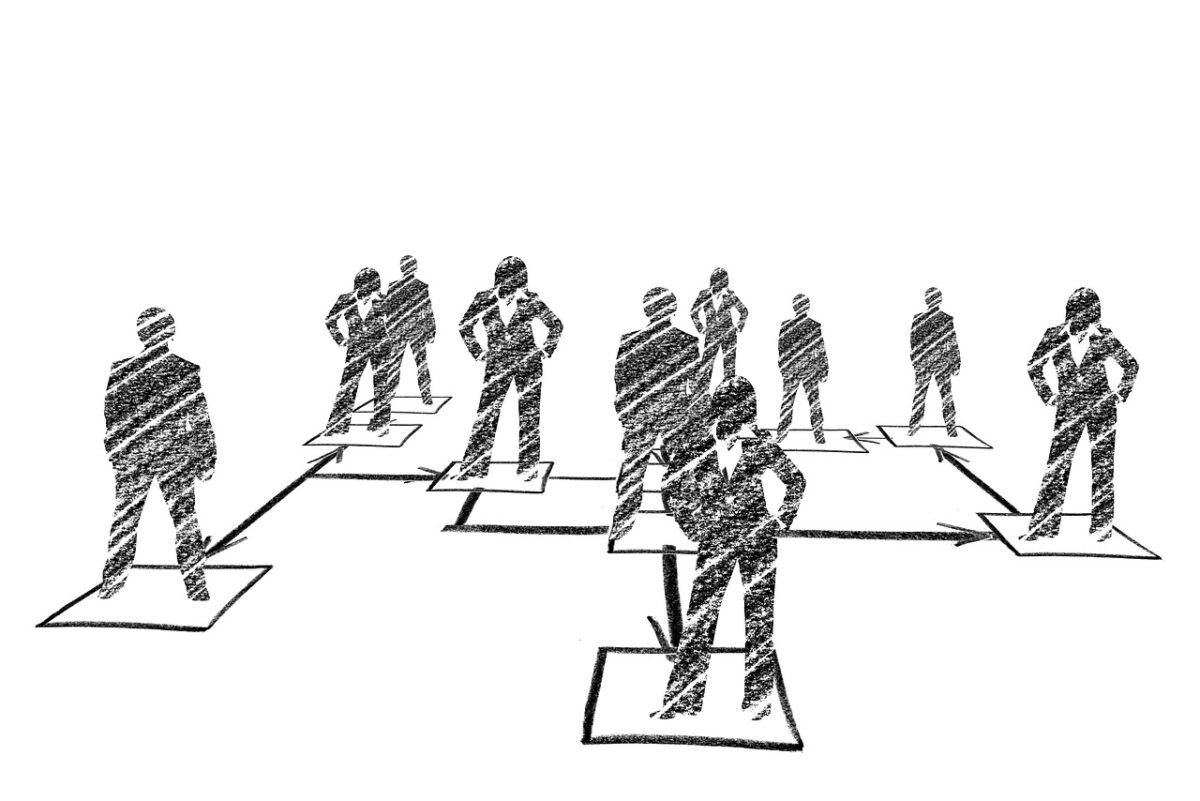How To Write The Perfect Job Description

Welcome to our comprehensive guide on writing job descriptions in the UK. In this blog, we’ll navigate the intricacies of crafting effective and engaging job descriptions tailored to the United Kingdom’s unique job market. Whether you’re a seasoned HR professional or a small business owner new to hiring, understanding the fundamentals of writing job descriptions is crucial for attracting the right talent. We’ll cover everything from the basics of structuring your descriptions to infusing them with your company’s culture and values, ensuring they resonate with the ideal candidates across the UK. Join us as we explore these key elements and equip you with all the tools you need to succeed in the competitive hiring landscape.
Quick Links:
- 1. Understanding The Role
- 2. Writing A Clear Job Title
- 3. Defining Duties And Responsibilities
- 4. Specifying Skills And Qualifications
- 5. Detailing The Experience Required
- 6. Including Salary And Benefits
- 7. Promoting Company Culture And Values
- 8. Crafting A Compelling Job Advertisement (In The UK)
- 9. Using Inclusive Language
- 10. Call To Action
- Recruitment Resources To Enhance Your Hiring Process
Highlights And Key Takeaways:
- To write the perfect job description, you should conduct a comprehensive job analysis to ensure that your description is clear, accurate and compelling to those who are a perfect fit for your team.
- You can follow our 10 steps to write a good job description from scratch and use our job description template to structure your text.
- Alternatively, you can edit one of our pre-written job descriptions, adding your company culture, values, and goals, for the perfect job description.
1. Understanding The Role

Crafting an effective job description begins with a foundational step: clearly understanding the role itself. This initial deep dive into the specifics of the position is critical because it ensures that the resulting job description accurately reflects the requirements and expectations of the role. It’s not just about listing responsibilities and skills; it’s about capturing the essence of the position and how it aligns with the company’s goals.
Why a Clear Understanding Is Essential
Before communicating what you need in a new hire, you must thoroughly understand the job’s demands and the type of candidate who would best fill the position. A precise and effective job description attracts suitable candidates and is a benchmark for evaluating applicants. It also sets clear expectations for prospective employees, which can enhance job satisfaction and retention rates.
Example: Job Analysis for a Marketing Manager
A job analysis session for a Marketing Manager might proceed as follows:
- Gather Existing Information: Review current job descriptions, performance standards, and other documentation related to the role. If the position is new, look at similar roles within the industry.
- Conduct Interviews: Speak with stakeholders such as the departing employee, their supervisor, and team members. This helps to identify the role’s actual responsibilities versus those theoretically assigned to it.
- Observe the Role in Action: Observe the daily activities associated with the role. For a Marketing Manager, this might involve attending planning meetings, reviewing current marketing materials, and assessing the interaction between the marketing department and other company areas.
- Identify Key Responsibilities: Compile a list of primary job responsibilities from these observations and interviews. For instance, a Marketing Manager might need to oversee the creation of marketing campaigns, manage a team of marketing professionals, and analyse market research to adjust marketing strategies effectively.
- Determine Necessary Skills and Qualifications: Based on the responsibilities identified, list the required skills and qualifications. These might include strategic thinking, creativity, proficiency in digital marketing tools, leadership skills, and relevant industry experience.
- Align with Company Goals: Ensure that the role supports the company’s overall objectives. For a Marketing Manager, this could mean focusing on skills that enhance brand recognition and drive sales.
View a complete Marketing Manager Job Description Example here.
For more detailed guidance on the initial steps in this process, our blog post What Is The First Step In Crafting An Effective Job Description? offers additional insights and tips to ensure you start on the right foot.
Understanding the role thoroughly lays the groundwork for writing an effective job description that attracts the right candidates, aligns with your organisational goals, and sets up the new hire for success. By conducting a comprehensive job analysis, you ensure that your description is clear, accurate and compelling to those who are a perfect fit for your team.
2. Writing A Clear Job Title

A clear and precise job title is the cornerstone of an effective job description. It’s the first detail that potential candidates see and is crucial in attracting suitable candidates. The right job title ensures the position is easily searchable and reaches the appropriate audience. Moreover, it sets the tone for the responsibilities and the level of seniority expected of the candidates.
Tips for Creating an Effective and Searchable Job Title
- Be Precise: Avoid generic titles that could apply to various roles. Specific job titles help potential candidates immediately understand the nature of the job and self-assess their fit for the position.
- Use Common Industry Terms: Incorporate keywords that candidates will likely use in their job searches. This increases the visibility of your posting on job boards and search engines.
- Avoid Jargon and Acronyms: While specific terms are important, overly technical language or company-specific acronyms can confuse job seekers who need to become familiar with your organisation.
- Reflect the Level of Seniority: Ensure the job title communicates the seniority level of the position, whether it’s an entry-level role, a managerial position, or a senior executive spot.
- Keep It Short and Descriptive: A concise title is more effective. Aim for clarity and impact without becoming verbose.
Example: Vague Job Title vs. Specific Job Title
Vague Title: Marketing Professional
- Issues: This title is overly broad and can attract many applicants, many of whom may need to possess the necessary skills or experience. It does not specify the focus area or the seniority of the role, leading to confusion and a high volume of unsuitable applications.
Specific Title: Senior Digital Marketing Manager, B2C
- Benefits: This title clearly indicates the seniority (Senior), the expertise area (Digital Marketing), and the target market (B2C – Business to Consumer). It attracts professionals with direct experience in digital marketing aimed at consumers and filters out candidates who may only have experience in unrelated marketing sectors or B2B environments.
For further examples and a deeper understanding of effective job titles, consider reviewing our blog post Job Title Examples. This resource provides a variety of samples that can help you craft job titles that are clear and specific, optimised for search engines, and appealing to the right candidates.
Crafting the right job title is not just about capturing attention but finding the right attention. By focusing on clarity and searchability, you ensure that your job posting reaches and resonates with the most qualified candidates, ultimately leading to a more efficient and successful hiring process.
3. Defining Duties And Responsibilities

A central component of effective job descriptions is clearly articulating job duties and responsibilities. This section outlines the day-to-day activities and assigned duties of the role and clarifies the job purpose and what the organisation expects from the candidate. Well-defined duties ensure that applicants understand the scope of the role and the essential activities they will be responsible for, which helps attract candidates who are well-suited and prepared for the challenges of the job.
How to Outline Key Tasks in a Clear and Concise Manner
- List Major Responsibilities: Begin by identifying the role’s primary responsibilities. Focus on what the candidate will spend most of their time doing, and clarify how these activities contribute to the organisation’s goals.
- Use Action Words: Start each point with an action verb to make the responsibilities vibrant and clear. This approach not only adds clarity but also strength to the description.
- Be Specific but Not Overly Detailed: Provide enough detail to convey the scope of the responsibilities without listing every minor task. Avoid overwhelming the candidate with minutiae that can be discussed during the interview.
- Prioritise the Tasks: Arrange the duties from the most critical or time-consuming to the least. This helps job seekers gauge what aspects of the job will dominate their workload.
- Include Outcomes or Goals: Attach expected outcomes to the duties where possible. This helps candidates understand the impact of their work and the standards by which they will be evaluated.
Example: List of Duties for a Customer Service Representative
- Manage Customer Inquiries: Respond to customer queries via phone, email, and live chat, providing information and resolving issues quickly and professionally.
- Record Keeping: Maintain accurate records of all customer interactions, transactions, comments, and complaints.
- Feedback Collection: Gather customer feedback to propose improvements to the product or service team, enhancing overall customer satisfaction.
- Process Orders and Payments: Ensure accurate processing of customer orders and manage billing and payments, correcting discrepancies as necessary.
- Support Customer Retention: Engage in activities to retain customers, including follow-up communications and promotional offers.
- Report Generation: Compile reports on overall customer satisfaction and frequently encountered issues, contributing to strategic planning and continuous improvement efforts.
View a complete Customer Service Representative Job Description Example here.
For a comprehensive guide on what tasks to include and how to phrase them effectively, refer to our blog post, What Tasks To Include In A Job Description. This resource will offer further insights into balancing comprehensiveness with clarity, ensuring that your job descriptions capture the essence of the role’s responsibilities while appealing to the ideal candidates.
By effectively outlining duties and responsibilities, you provide a clear picture of what the role entails and set the stage for aligning candidate expectations with organisational needs. This clarity helps ensure that the right job seeker will feel motivated to apply, knowing exactly what the job involves and what will be expected of them.
4. Specifying Skills And Qualifications

A critical aspect of writing job descriptions is specifying the skills and qualifications required for the position. This clarity helps ensure that you attract the right candidate – someone who not only fits the role technically but also meshes well with your company culture. Careful consideration is required to effectively differentiate between essential and preferred qualifications and to underscore both hard and soft skills.
Guidance on Distinguishing Between Essential and Desirable Skills
- Identify Core Competencies: Essential skills are those without which the job cannot be performed. These should be non-negotiables that are vital for day-to-day operations.
- List Preferred Qualifications: These skills would enhance a candidate’s performance but are not critical for job function. Job seekers lacking these skills should still be considered if they meet all essential criteria.
- Separate Technical Skills from Soft Skills: Delineate between hard skills (like coding languages for a Software Developer) and soft skills (such as problem-solving and communication). This helps candidates self-assess their suitability based on technical capabilities and interpersonal attributes.
- Be Realistic and Inclusive: Avoid inflating requirements with unnecessary qualifications. This can deter great candidates who might self-select out of the application process.
- Update Regularly: As roles evolve, so should the skills and qualifications listed in the job description. Make sure these changes reflect current needs and industry standards.
Example: Skills and Qualifications List for a Software Developer Position
Essential Skills:
- Proficiency in programming languages such as Java, Python, and C++.
- Experience with database management and query languages like SQL.
- Understanding of software development methodologies like Agile and Scrum.
Preferred Qualifications:
- Familiarity with version control systems like Git.
- Experience with cloud services such as AWS, Azure, or Google Cloud Platform.
- Background in developing mobile applications for iOS and Android.
Soft Skills:
- Strong problem-solving abilities: capable of tackling complex software issues.
- Effective communication skills: articulating technical concepts to non-technical team members.
- Team collaboration: experience working in diverse teams to complete projects.
View a complete Software Developer Job Description Example here.
Explore our blog post, What Skills Are Needed For Different Jobs? for additional insights into what skills are crucial for various roles. This resource provides an in-depth look at the typical requirements across various industries, helping you refine the skills section of your job descriptions more accurately.
By clearly specifying preferred and essential qualifications and highlighting important soft skills, you ensure that your job descriptions include capable candidates and those who are the best fit for your team’s dynamics and your company’s long-term goals. This strategic detailing of skills fosters a more targeted recruitment process, enhancing the chances of finding the right candidate for the job.
5. Detailing The Experience Required

The experience section of a job description is pivotal in attracting the right candidates. It tells potential applicants what background they must have to be considered for the role. An engaging job description not only lists job duties and requirements but also paints a picture of the journey an ideal candidate would have experienced to arrive at this opportunity. Specifying experience requirements helps to filter applicants based on their readiness to handle the responsibilities associated with the position.
Advice on How to Specify Experience to Attract the Right Candidates
- Define Relevant Experience: Clearly state what types of previous work experience are necessary. This can include specific roles, industries, or projects directly related to the job.
- Use Years of Experience as a Guide: Offering a range (e.g., 3-5 years) can provide flexibility and attract a broader range of candidates while still setting a benchmark for the level of expertise expected.
- Be Specific About Skills Development: Mention how certain experiences should have contributed to the candidate’s skill set. For example, management experience might be crucial for a role that involves leading a team.
- Distinguish Between Essential and Desirable Experience: This helps candidates understand what is mandatory versus what could enhance their application but isn’t critical.
- Consider Alternative Credentials: Be open to equivalent experiences such as relevant freelance work, volunteer positions, or even personal projects that could provide comparable skills.
Example: Experience Requirements for a Financial Accountant Role
Essential Experience:
- Minimum of 5 years’ experience in a financial accounting or similar role.
- Proven track record of managing full-cycle accounting, including preparation of financial statements, balance sheets, and tax returns.
- Experience with financial regulation and reporting requirements.
Preferred Experience:
- Previous work in a multinational corporation or across multiple accounting jurisdictions.
- Familiarity with industry-specific financial software, such as SAP or Oracle Financials.
– Additional Qualifications:
- Certified Public Accountant (CPA) status or equivalent is highly desirable.
- Demonstrated ability to analyse financial data and prepare financial reports, statements, and projections.
View a complete Financial Accountant Job Description Example here.
This section of your job description for a Financial Accountant delineates the essential and desirable experiences. It specifies what aspects of their previous roles will be relevant to their success in this new position. The goal is to ensure that the ideal candidate recognises themselves in the description and feels compelled to apply, knowing they have the right background to excel in the role.
By clearly detailing the experience required, your job description becomes a powerful tool in the recruitment process. It ensures that those who apply are better suited and more likely to meet the position’s demands effectively.
6. Including Salary And Benefits

In today’s competitive job market, transparency in salary and benefits in job postings is more crucial than ever. It is a key factor in attracting top talent and sets a precedent for openness and trust within your company. Our blog post, Should You Include Salary In A Job Description? explores the advantages of this approach in depth and should be a primary resource for understanding the value of this practice.
The Importance of Transparency in Salary and Benefits
Being upfront about compensation in job postings not only attracts potential employees who are a good fit for the role financially but also filters out those for whom the offered salary needs to meet expectations, saving time and resources in the recruitment process. A well-structured job description that includes a salary range and detailed benefits helps to set clear expectations and demonstrates to candidates that your company values fairness and transparency. This can enhance your company’s reputation in the job market, making it a more attractive workplace.
Example: Effective Salary and Benefits Description for a Human Resources Manager
Salary:
- The starting salary for this position ranges from £42,000 to £55,000 per year, commensurate with experience and qualifications.
Benefits:
- Healthcare Coverage: Comprehensive private medical insurance, including dental and vision care options.
- Retirement Plan: Generous company-matching pension plan, contributing up to 5% of salary.
- Work-Life Balance: Flexible working hours and the option for remote work two days per week.
- Professional Development: Annual budget for training and development to enhance your skills and career progression.
- Additional Perks: Wellness programmes, on-site fitness classes, and a monthly health and wellness activities stipend.
View a complete Human Resources Manager Job Description Example here.
This structured outline indicates what potential employees can expect regarding compensation and additional perks. It addresses direct monetary compensation, personal and professional growth, as well as work-life balance, which are key considerations for many job seekers today.
Including such detailed and transparent information about salary and benefits in your job listing not only meets the expectations of great talent but also positions your company as an employer of choice. It communicates that you are committed to the well-being and development of your staff, which can significantly enhance your attractiveness to the best candidates.
7. Promoting Company Culture And Values

Infusing your company culture into the job description is essential for attracting candidates with the skills and experience you need and sharing your organisation’s values and ethos. This alignment can dramatically enhance employee satisfaction and retention, making it crucial to communicate this effectively. Our blog post, How To Infuse Company Culture And Brand Values Into Your Job Descriptions, offers detailed guidance on weaving this important element throughout your recruitment materials.
How to Infuse Company Culture into the Job Description
- Use the Right Language: The job description should reflect the tone and language of your company culture. If your work environment is informal and innovative, let that come through in your wording.
- Include a Mission Statement: Start with a brief description of your company’s mission and how it impacts the world. This sets the stage for the role and connects emotionally with potential candidates who share similar values.
- Describe the Work Environment: Offer a glimpse into the daily work life at your company. Mention collaborative projects, role autonomy, or any unique office traditions.
- Highlight Core Values: Clearly outline the core values that define your business. This could include commitment to innovation, transparency, diversity, community involvement, etc.
- Showcase Growth and Development Opportunities: Emphasise how the company supports personal and professional growth, which can draw prospective employees.
Example: Description of Company Culture for a Tech Startup
At XYZ, we’re not just building software but shaping the future of digital interaction. Our mission is to innovate with integrity, pushing boundaries while ensuring our solutions enhance and empower human connectivity. Here, you’ll find a fast-paced, agile environment where creativity and collaboration are not just encouraged but expected.
Core Values:
- Innovation: We believe in thinking differently and challenging the status quo.
- Integrity: We do the right thing even when no one is watching.
- Collaboration: Every idea is heard, and every team member is valued.
Work Environment:
- Open and dynamic office space with areas for brainstorming and relaxation.
- Regular team-building retreats and weekly innovation sessions.
- Support for continuous learning through access to courses, workshops, and conferences.
This description not only provides the best job description for attracting like-minded candidates but also serves as a brief description that encapsulates the essence of the company’s culture and what it stands for.
By effectively promoting your company culture and values within your job descriptions, you attract candidates more likely to thrive in your environment and contribute positively to your team’s dynamics. This approach enhances new hires’ fit and strengthens your company’s cohesion and morale.
8. Crafting A Compelling Job Advertisement (In The UK)

Transforming a straightforward job description into an engaging job advert requires a strategic approach, especially when aiming to capture the attention of the best talent in the UK. Job ads are not just about listing the responsibilities and requirements; they’re about selling the position and the company. A successful job ad will convey excitement about the role and the company culture and motivate the right candidates to apply. To understand the nuances between the two documents, explore our blogs on The Difference Between A Job Description And A Job Advert and How To Write A Job Advert.
Strategies to Convert a Basic Job Description into an Enticing Job Advert
- Emphasise the Company’s Unique Selling Points: Highlight what makes your company a great workplace. Focus on culture, growth opportunities, and unique benefits that differentiate your company.
- Use a Positive Tone: Write in an upbeat and enthusiastic tone to reflect the exciting opportunity the role represents. The positive tone helps create an emotional connection with potential applicants.
- Be Concise and Captivating: The ideal length for a job ad is shorter than a detailed job description. It should be long enough to convey key information and concise enough to maintain the reader’s interest.
- Include a Call to Action: Encourage readers to apply by providing clear instructions on how to do so. Make the application process as simple as possible.
Example: Transformation of the HR Manager Job Description into a Job Advert
Job Description:
- Manage all human resources operations, including recruitment, performance management, and training.
- Ensure compliance with employment laws and regulations.
- Oversee employee relations and staff well-being.
Job Advert:
Join Us and Shape the Future of Our Workforce!
We’re looking for a passionate HR Manager to lead our people initiatives at XYZ, a leading tech innovator based in the heart of London. At XYZ, we support the growth of technology and the growth of our people. As part of our team, you’ll have the opportunity to work in a vibrant environment where your work directly impacts our company culture and advances our mission to innovate with integrity.
What You’ll Do:
- Spearhead innovative HR practices that attract and retain top talent.
- Champion a supportive and inclusive workplace recognised as one of the best places to work in the tech industry.
- Navigate the exciting challenges of a rapidly growing company with your expertise in employment law and employee relations.
Why XYZ?
- Competitive salary and comprehensive benefits package.
- Opportunities for professional growth and advancement.
- A dynamic, inclusive culture that values work-life balance.
Ready to make a difference? Apply now and join a company that values you as much as you value your career!
In crafting this job ad, we’ve turned a standard HR Manager job description into a compelling narrative that not only details the role’s responsibilities but also highlights the positive and dynamic nature of the company and the impact the role has on our culture. This approach ensures the job description online is informative and appealing, effectively attracting the right talent to your business. For further guidance, refer to our blog: How To Convert A Job Description Into A Job Ad.
9. Using Inclusive Language

Inclusive job descriptions are essential in today’s diverse job market. The language used in your job summary and throughout the job description can significantly influence the diversity of your applicant pool. Impressions matter, and the initial impression given by a job description can attract or repel potential candidates. Therefore, it’s crucial to avoid discriminatory language and phrases that might unconsciously deter groups of people from applying. Employers should strive to double-check their job descriptions for inclusivity, ensuring they welcome diverse applicants.
Importance of Using Language That Welcomes a Diverse Range of Applicants
Using inclusive language in job descriptions is not just about avoiding legal pitfalls; it’s about creating an environment that reflects a commitment to diversity and inclusion. This approach widens your talent pool and enhances the company’s reputation as an equitable and forward-thinking employer.
- Avoid Gender-Coded Words: Terms like ‘strongman’ or ‘salesman’ can subconsciously signal that only men are suitable for the role, whereas ‘strong person’ or ‘salesperson’ are neutral alternatives.
- Use Universally Accessible Language: Avoid jargon and complex phrases that could confuse candidates for whom English is a second language or those unfamiliar with specific industry terminology.
- Promote Flexibility When Possible: Phrases like “must be able to work all shifts” can be off-putting to candidates with disabilities or caregiving responsibilities. If possible, note flexibility or willingness to accommodate different needs.
- Highlight Your Commitment to Diversity: Clearly state that your company values diversity and encourages applications from all qualified individuals, regardless of their background.
Example: Before and After Analysis of a Job Description
Before:
- Required: A strong sales background with a proven track record of aggressively pursuing targets. Candidates must be able to work under pressure and manage male-dominated teams.
After:
- Required: Robust experience in sales with a proven track record of meeting targets. We’re seeking candidates who can thrive under pressure and effectively lead diverse teams. We encourage applicants of all genders and backgrounds to apply.
Changes Made:
- Replaced “aggressive” with “meeting” to remove connotations that might seem daunting.
- Removed “male-dominated” to avoid implying a gender preference for the team composition.
- Added encouragement for all genders and backgrounds to apply, reinforcing the commitment to diversity.
By carefully crafting inclusive job descriptions and ensuring the job summary is welcoming to all, employers can significantly increase the range of candidates who feel encouraged to apply. This enriches the talent pool and helps build a workforce that reflects the diverse society in which we operate. Always double-check your language to ensure it aligns with these inclusive practices, making your job postings accessible to as broad an audience as possible. For further tips on writing an inclusive job description, explore our blog How To Write An Inclusive Job Description.
10. Call To Action

A compelling Call to Action (CTA) is crucial to any job description. It serves as the bridge between potential candidates reading your listing and deciding to apply. A strong CTA can help your job description stand out, enticing more candidates to take the next step. It’s not just a closure; it’s a prompt that can motivate the right candidate to transition from interest to action. For deeper insights into crafting effective CTAs, refer to our blog post What Role Does A Call To Action Play In A Job Description?
How to Effectively Encourage Potential Candidates to Apply
- Be Clear and Direct: Use direct language without ambiguity about what the applicant needs to do next. Phrases like “Apply Now,” “Join Us,” or “Start Your Journey” are clear and engaging.
- Create Urgency: Without being pushy, suggest that the opportunity won’t last forever. Phrases like “Don’t miss out” or “Apply today” can create a sense of urgency.
- Highlight Ease of Application: Let candidates know that the process is straightforward. If your application process is simple, mention this to reduce any hesitations about applying.
- Use Engaging Language: Make your CTA enthusiastic and inviting. It should make the candidate feel they are being invited to join something exciting and unique.
- Personalise the Invitation: Make it feel like you are talking directly to the reader. Using words like “you” makes the message more personal and appealing.
Example: Strong Call-to-Action for an Operations Manager Job Posting
“Are you ready to drive success and lead a dynamic team? We’re looking for an Operations Manager like you to guide our operations to new heights. Don’t miss out on this opportunity to make a real impact. Click ‘Apply Now’ to submit your application and join our trailblazing team today! Your next big challenge awaits.”
Changes Made:
- Direct Language: “Apply Now” and “Join our trailblazing team” are direct and concise.
- Urgency: “Don’t miss out” encourages quick action.
- Ease of Application: “Click ‘Apply Now’ to submit your application” implies a simple application process.
- Engaging and Personal Language: “Are you ready to drive success?” and “like you” personalise the appeal and directly engage the reader.
View a complete Operations Manager Job Description Example here.
By incorporating these elements into your call to action, you not only enhance the appeal of your job listings but also increase the likelihood of attracting qualified candidates who are eager to apply. A strong CTA completes your job description and maximises its effectiveness in attracting candidates.
Recruitment Resources To Enhance Your Hiring Process
In today’s competitive talent market, having the right tools at your disposal can significantly streamline and enhance your hiring process. Our suite of recruitment resources is designed to provide you with the support needed to attract, engage, and hire the best candidates efficiently.
- Blank Job Description Template: This versatile template is a foundation for your job descriptions. It outlines all the essential sections that need to be completed, such as job title, duties, qualifications, and experience. We also offer helpful tips on writing each section effectively, ensuring that your job descriptions are comprehensive and compelling.
- Blank Job Advert Template: Consistency in job ads is key to maintaining your company’s professional image. Our blank job advert template ensures that each of your adverts meets high-quality standards and aligns perfectly with your brand voice. This template simplifies creating effective and engaging job ads that capture the attention of potential candidates.
- UK Library of Pre-Written Job Descriptions: Time is a precious commodity in recruitment. Our library of pre-written job descriptions provides a quick-start option, covering various roles across various industries. Each description is carefully crafted to be specific and adaptable, saving you time and improving your recruitment workflow.
You can ensure a more streamlined and effective recruitment process by leveraging these resources. Below, you can find any job description by job sector:
- Accounting Pre-Written Job Descriptions
- Agriculture Pre-Written Job Descriptions
- Analyst Pre-Written Job Descriptions
- Armed Forces Pre-Written Job Descriptions
- Arts Pre-Written Job Descriptions
- Automotive Pre-Written Job Descriptions
- Banking and Insurance Pre-Written Job Descriptions
- Bar And Restaurant Pre-Written Job Descriptions
- Charity Pre-Written Job Descriptions
- Construction Pre-Written Job Descriptions
- Customer Services Pre-Written Job Descriptions
- Education Pre-Written Job Descriptions
- Engineering Pre-Written Job Descriptions
- Facilities Management Pre-Written Job Descriptions
- Finance Pre-Written Job Descriptions
- Healthcare Pre-Written Job Descriptions
- Hospitality And Leisure Pre-Written Job Descriptions
- Human Resources (HR) Pre-Written Job Descriptions
- Information Technology (IT) Pre-Written Job Descriptions
- Leadership Pre-Written Job Descriptions
- Legal Pre-Written Job Descriptions
- Management Pre-Written Job Descriptions
- Manufacturing Pre-Written Job Descriptions
- Marketing Pre-Written Job Descriptions
- Media Pre-Written Job Descriptions
- Nurse Pre-Written Job Descriptions
- Office Administration Pre-Written Job Descriptions
- Personal Care Pre-Written Job Descriptions
- Professional Services Pre-Written Job Descriptions
- Project Manager Pre-Written Job Descriptions
- Public Sector Pre-Written Job Descriptions
- Religious Worker Pre-Written Job Descriptions
- Retail Pre-Written Job Descriptions
- Sales Pre-Written Job Descriptions
- Science Pre-Written Job Descriptions
- Social Care Pre-Written Job Descriptions
- Teacher Pre-Written Job Descriptions
- Telecommunications Pre-Written Job Descriptions
- Transportation And Logistics Pre-Written Job Descriptions
These tools are designed to help you craft precise job descriptions and adverts, attract the right candidates, and ultimately make successful hires.
Good Job Description FAQs
Next we answer employer and Hiring Manager frequently asked questions:
To write a unique job description, start by clearly understanding the role’s unique aspects within your organisation. Instead of relying on generic templates, tailor the description to reflect your company’s culture and the specific qualifications you value. Highlight what sets the position apart, such as innovative projects, opportunities for growth, or the impact the role will have on the organisation. Use engaging and inclusive language to describe the duties, benefits, and work environment. This personal touch will help your description stand out and resonate with the type of candidates who will thrive in your company.
A good job description should be concise yet comprehensive, including the following key elements: 1. Job Title: Clearly state the job title as it reflects the nature and level of the work. 2. Purpose of the Role: Briefly describe the role’s main objective and how it fits into the organisation. 3. Duties and Responsibilities: List the primary tasks expected to be performed. Be specific to give candidates a clear idea of what the job entails. 4. Skills and Qualifications: Outline the professional and personal skills required for the position. Include both essential and desirable criteria. 5. Experience: Specify the required level and type of experience, clarifying what is essential and preferred. 6. Working Conditions: Mention the location, travel requirements, and any physical or environmental conditions related to the job. 7. Salary Range and Benefits: Provide a salary range and detail any additional benefits, such as bonuses, pensions, health insurance, or flexible working conditions. 8. Company Overview: Include a brief introduction to your company, covering values, mission, and what it’s like to work there.
To write a better job description, consider the following tips: 1. Focus on Clarity: Use clear, straightforward language. Avoid jargon and overly technical terms unless necessary. 2. Be Inclusive: Use language that is welcoming to all potential applicants. Avoid gender-coded words (like ‘salesman’) and phrases that could deter people from diverse backgrounds from applying. 3. Highlight Growth Opportunities: Mention training, development opportunities, and career progression paths to attract candidates interested in growth and development. 4. Encourage Action: End the job description with a strong call-to-action that tells candidates exactly how to apply and what the next steps will involve. 5. Seek Feedback: Before publishing, get Feedback on the description from current employees in similar roles or those who will interact closely with the new hire. This can help ensure accuracy and effectiveness.



